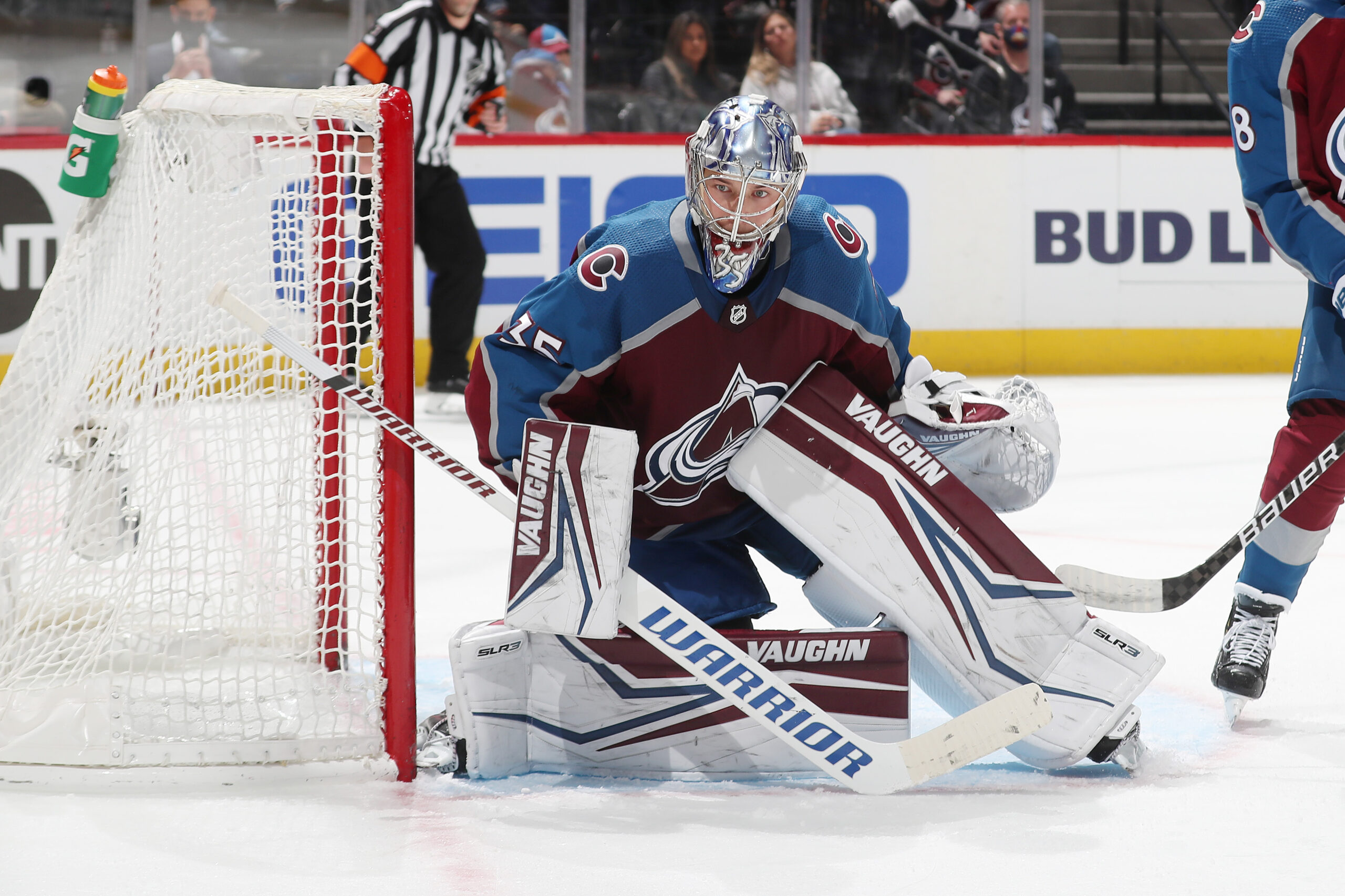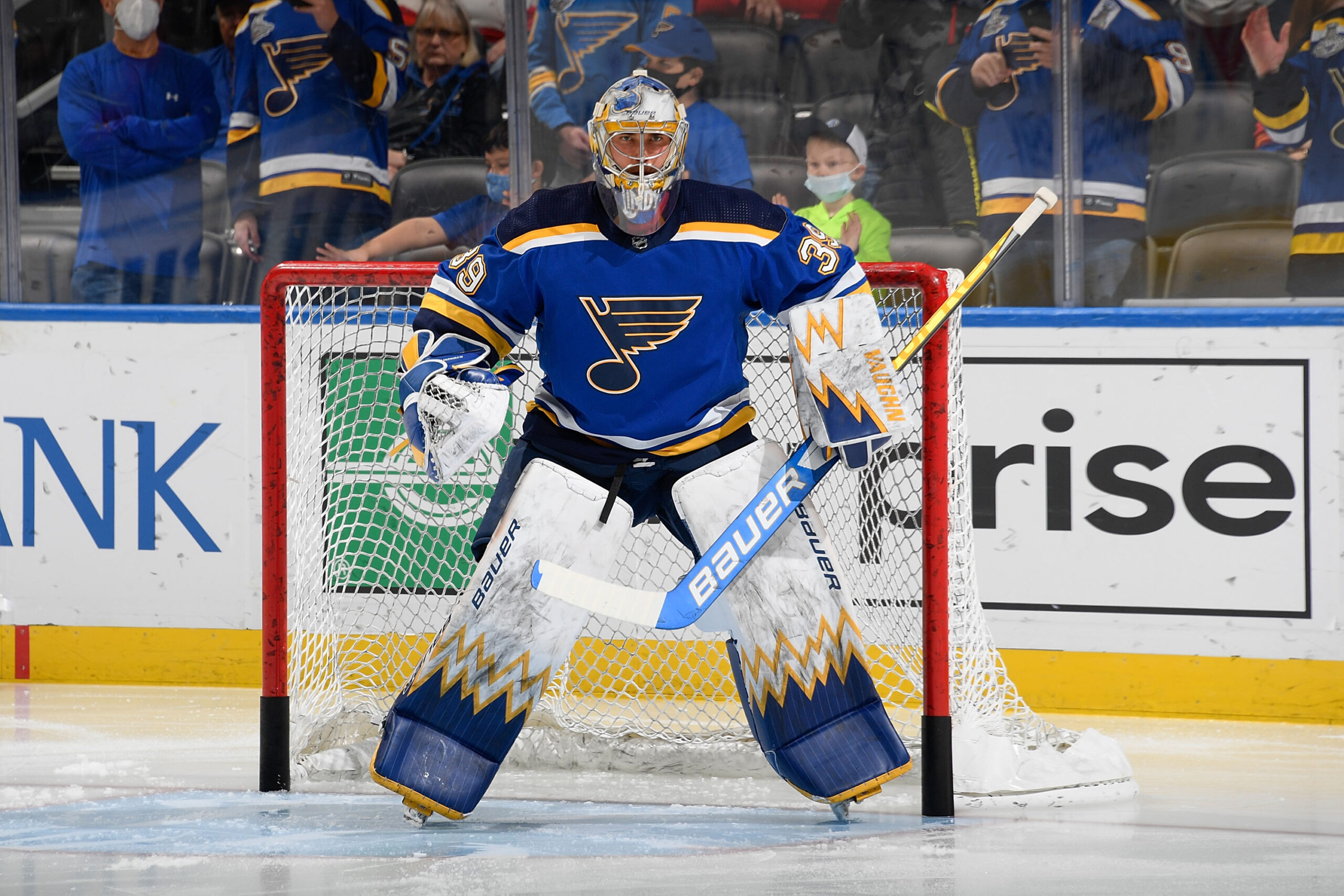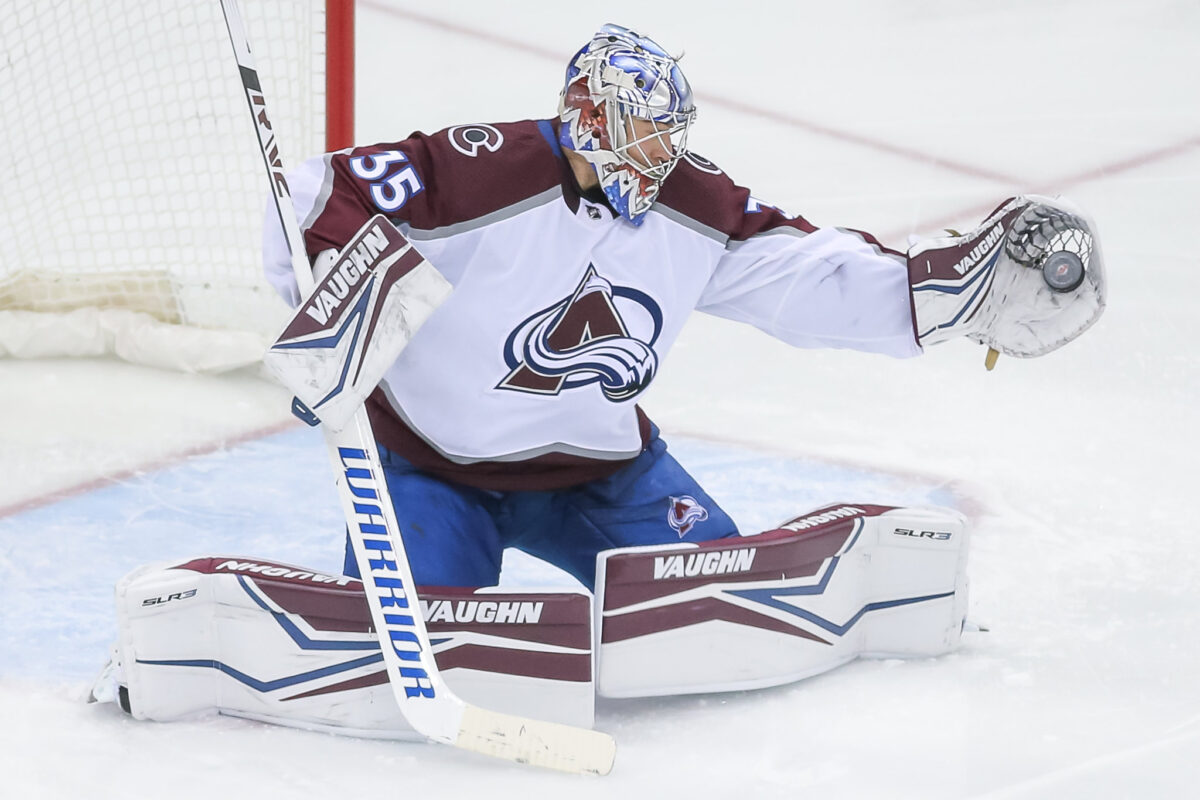Whenever free agency rolls around and general managers (GMs) are forced to splash the cash on netminders, we always hear the same refrain: “goalies are voodoo.” But, considering the age of analytics and sports psychology has arrived, is that a sufficient statement anymore?
Granted, it’s difficult to forecast goaltending performances into the future and teams value certainty – hence the Toronto Maple Leafs moved on from the topsy-turvy Jack Campbell while the Minnesota Wild stuck with Marc-Andre Fleury’s steady hands. But isn’t that the point?
When push comes to shove, GMs almost always opt for what they feel is the safest bet between the pipes. Assessing the quality of backstops, albeit an unprecise science, has been part and parcel of life in the NHL for decades, which is why the Washington Capitals moved heaven and earth to sign Darcy Kuemper and Charlie Lindgren this offseason.


GM Brian MacLellan started the summer with a tandem of Ilya Samsonov and Vitek Vanecek but left the former unqualified and traded the latter to the New Jersey Devils. Bulldozing the Capitals’ goaltending department was a bold call, but will it pay off?
Darcy Kuemper: Washington’s New No. 1 Goalie
It isn’t normal for the reigning Stanley Cup champions to let their starting netminder walk in free agency. But a flat salary cap isn’t either.
“You never know where you’re going to end up,” Kuemper said of his move to D.C. “Everything happens for a reason and it worked out and ended up with a great organization, a great team and super excited for it.”
Unfortunately for the Canadian, it was impossible – or, perhaps more fittingly, unpalatable – for the Colorado Avalanche to retain his services. Unlike the Capitals, they couldn’t afford to allocate 6.36 percent of their cap space to a goaltender they still had reservations about.
Kuemper was solid, but not spectacular, last season. He made 57 regular-season appearances, upholding a .921 save percentage (SV%) and 2.54 goals-against average (GAA). Following a gruesome eye injury, his stats dipped in the playoffs, as he had a .902 SV%, 2.57 GAA.
Standing at 6-foot-5, the 32-year-old was an important part of Colorado’s march to the summit. But he wasn’t indispensable, as proven by Pavel Francouz’s sturdy performances in relief.
“He just won a Stanley Cup,” MacLellan said of Kuemper. “He’s had a lot of good years, a lot of good performances. Seems like a good person, good character, a good team guy. It’s exactly what we needed going into next year.”
As previously reported, MacLellan desired a “significant or legitimate” upgrade to his tandem at last year’s deadline. He wanted Fleury, but the former Pittsburgh Penguin said ‘no’.
In the wake of Kuemper’s arrival, there is only one question worth asking: is he a significant or legitimate upgrade on Vanecek and Samsonov? Let’s start with their regular-season numbers from last season:
| Appearances | Save Percentage | Goals-Against Average | Goals Saved Above Expected (per Game) | |
| Darcy Kuemper | 57 | .921 | 2.54 | 25.1 (0.44) |
| Vitek Vanecek | 42 | .908 | 2.67 | 0.9 (0.02) |
| Ilya Samsonov | 44 | .896 | 3.02 | -12.5 (-0.28) |
Due to Washington’s early playoff exit, the picture is less clear in the postseason. Samsonov recorded a better save percentage than Kuemper, but in a radically smaller sample size that ended in a first-round exit.
Kuemper also spent much of the Avalanche’s Cup run retraining his eye, visiting an optometrist several times each day to give his team the best chance of success. In other words, it would be foolish to read too much into the trio’s playoff numbers – especially as Vanecek and Samsonov made high-profile errors en route to elimination.

For now, at least, MacLellan should be confident that he has found a “significant or legitimate” upgrade in net. While Kuemper still must prove he is worth a five-year, $26.25 million contract – his record, compared to Washington’s other options in free agency, speaks for itself.
Peter Laviolette added: “It’s more than just experience. It’s experience and success. His numbers have been good. He’s big. He covers a lot of net. His numbers say he keeps the puck out of the net.”
Capitals Roll the Dice on Charlie Lindgren
Few expected the Capitals to enter next season with an entirely new tandem. Even though there was a lively debate about whether MacLellan should retain Vanecek or Samsonov, axing both wasn’t on the agenda. Regardless, the 63-year-old said ‘out with the old; in with the new’ and scooped up Lindgren to be Washington’s new No. 2.
“We liked his performance last year,” MacLellan said of Lindgren. “I know it wasn’t a lot of games, but we think there is some upside in there, so we gave them the three-year term because it was competitive for him and there was a lot of teams that were looking at him.”
Related: Capitals’ 2022-23 Depth Chart Boosted By Offseason Arrivals
Formerly of the Montreal Canadiens and St. Louis Blues, Lindgren has only made 29 appearances in the NHL. However, his numbers are encouraging. As third-in-command to Ville Husso and Jordan Binnington, he upheld a 5-0-0 record, 1.22 GAA, and .958 SV% last season.
The right-catcher was also rock-solid in the American Hockey League (AHL), finishing 2021-22 with a .925 SV% and 2.21 GAA for the Springfield Thunderbirds. Lindgren isn’t a sure bet, but the Capitals are bullish about the risk they have taken on him.
“It changed quite a bit,” MacLellan said of Washington’s plans in goal. “A lot of people (were) jockeying for a limited number of guys and seemed like seats filled up and then there was a pause and there was only a certain amount left and teams went from there.”
Unlike Kuemper, Lindgren is a total coin flip. He enjoyed a career year last season but recorded four sub-.900 SV% seasons before that. Is he legit? What happens if Kuemper is injured? Nobody knows…yet.
Why Kuemper and Lindgren Must Deliver for Washington
The Capitals are desperate to avoid a fifth straight first-round exit from the playoffs. They are running out of time to make the most of Alex Ovechkin’s gifts and will face a bleak period in the aftermath of his retirement.
Kuemper and Lindgren are under pressure to succeed in D.C. as a result. Washington’s shaky netminding cost them last season, especially during the team’s New Year slump, and MacLellan can’t afford to make the same mistakes again.
It has been a busy summer for goaltending musical chairs; the Capitals were active in a frantic marketplace and will have plenty of teams to compare themselves to next season. Washington’s season hinges on the quality of their goaltenders: has MacLellan cracked the code?
